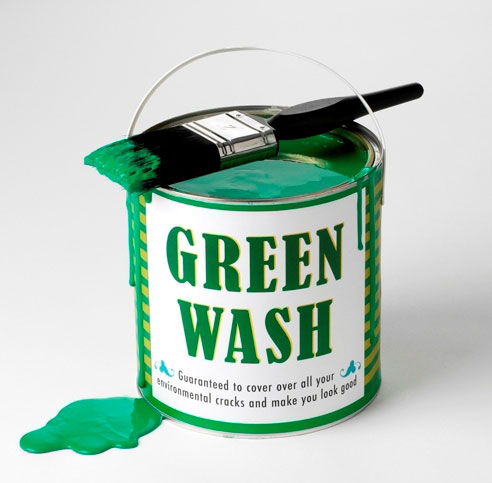What you are about to read here is an actual email conversation I had with a potential client who was asking us about the preparation needed for installing a graywater reuse system and rainwater harvesting system since they were about to start construction on their new home with a supposed “green” home building company. I have removed the names of the clients and the home builder for their protection.
We’ll focus on the graywater system part of the conversation since it involves the builder whereas a rainwater collection system can be installed independent of the builder. You will see that just because a home builder or company says they are “green”, doesn’t mean that they are necessarily… maybe if it is easy to do, then they are “green” but if takes any real effort, then that’s another story…
The Conversation
Client Request:
TYPE OF CONSULTATION: Graywater Reuse System
COMMENTS: About to start a new home build through [Insert national tract home builder name here] in central Texas. I am interested in a graywater reuse system (before they get the foundation going). I know it depends on a bunch of stuff but what does an average graywater system cost for irrigating an average suburban property?
Me: Thanks for visiting our website and contacting us. A graywater system is the better return-on-investment system versus the rainwater system but if you implement both of these systems you will see significant water savings over the years. For the graywater system, the builder needs to have his plumber plumb the graywater fixtures (clothes washer, bath tubs, and bathroom sinks) in a separate pipe. This graywater pipe should exit the foundation at the same point as the blackwater pipe (toilets, kitchen sink, dishwasher) so that an overflow system from the graywater basin can be plumbed back to the blackwater pipe. Once this is accomplished, the graywater system can be installed anytime after the house is finished.
Potential Client (PC): Do you guys speak with the builder about the logistics of at least getting the plumbing done for a graywater system or do I need to contact the builder to get this process rolling? I know I need to at least get the plumbing done now before the foundation is poured.
Me: If you tell the builder that you want to plumb your house for a future graywater system and need it “dual-plumbed”, they should understand. There really isn’t anything special other than running another set of pipes in the foundation. Most of the time we don’t need to speak with the builder, but you can certainly pass my info to them so that if they need to contact me, they can.
PC: Great…I emailed our sales person and she is going to forward my email to the builder. Once I speak with the builder I will let you know what they say. Once the piping is done, what are we looking at as far as finishing the system goes? What’s a round about cost on getting the system done and running?
Me: A typical graywater system will run between $2,000 to $4,000 depending on the extent of the distribution lines. I hope this helps.
PC: Just got word that the builder will not do the plumbing for graywater. That’s really unfortunate.
Me: Well, is it because you are too late in the game in getting this request to them? I mean, you are the client and you are paying for this house. I would think that you could make changes to the plans. Graywater plumbing is not required by building code in Texas so builders go into new projects thinking nothing about graywater or what they have to do at the plumbing installation stage to facilitate a graywater system. Dual plumbing is not anything different than installing the single pipe drain system they currently do.
PC: I emailed to ask. They claim to be a “green” builder which basically means they over charge you for windows and everything else…but that’s about the extent if it. There is really nothing truly green about the house.
Me: That is unfortunate. Typical green-washing… I see it everywhere.
PC: And like you said, we are in a perpetual drought but they are more concerned about my AC system working too hard than anything else and that’s pretty much it. They were going to charge me $500 to have a company come in to see if adding a door where an existing window is would be too un-green, stating it may cause my AC to not be able to keep up with this demand. Haha!
But adding a graywater system on my dime is against the question which I can see having WAY more added value than anything else in Texas.
We may be in a drought and running out of water but that gets trumped very quickly if someone can’t maintain their house at 68 degrees in the summer.
Green Washing Aside, There is a Larger Issue at Play Here
So there is an issue with this builder advertising to be “green” and denying the request of their current client to install the base infrastructure for one of the greenest home systems available, a graywater reuse system. Currently Texas and much of the US is going through a bad drought and water supply issues are becoming more and more important. Preparing for an uncertain future of climate change and an increased populace using more water would seems like a no-brainer. Their marketing and advertising practices aside, there is a much larger issue at play here…
The installation of piping for a future graywater system should be straight-forward for the builder since dual-plumbing is very easy to do at the front end of a project. I mean, the plumber is already there roughing in the drain pipes in the foundation. It is not like you are asking them to stop construction and get a different subcontractor in there to install some sort of weird “green” system. Even if the homeowner doesn’t install the actual graywater distribution system now, the dual-plumbed piping will be there, ready for any future installation of a graywater distribution system.
So what is the bigger issue… BUILDING CODE. The fact that a dual-plumbing requirement for graywater is not part of the building code here in Texas where droughts are common is mind boggling. Each municipality has the ability to approve and amend the different parts of the various building codes that are out there. Even if a requirement is not part of a state or national code, a municipality can approve additional code requirements. One example is Tucson, Arizona, where they require all new single family homes and duplexes to include plumbing for future graywater distribution.
It is not a problem with plumbing code since both the current Uniform Plumbing Code (UPC) and International Plumbing Code (IPC) editions have definitions and even sections dedicated to graywater reuse/recycling systems. The problem lies in the lack of a dual-plumbing requirement in the actual building code. Even if the UPC and IPC allow graywater reuse, if the dual-plumbing system doesn’t get installed during construction, most likely that home will never install a graywater reuse system in the future due to the high expense of tearing up their concrete slab foundation to reroute the graywater pipes.
Looking at it from the outside, it seems very simple but changing building code is very big endeavor since it involves many different city officials and departments that each have their own charges for upholding public safety. Even though it may be difficult, things need to change in how our homes “use” water to reflect our new reality of droughts and population growth.
So what do you say about this issue? What are your ideas to help implement change in our local and state building codes? Do you know of other cities that have implemented a dual-plumbing requirement?




